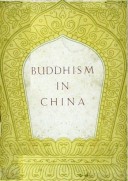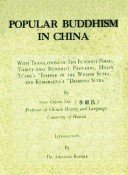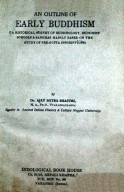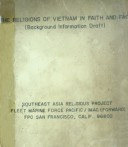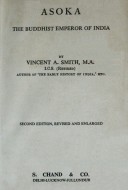Tìm Sách
Sách tiếng Anh-English >> Outlines of Indian Philosophy
Thông tin tra cứu
- Tên sách : Outlines of Indian Philosophy
- Tác giả : M. Hiriyanna
- Dịch giả :
- Ngôn ngữ : Anh
- Số trang : 415
- Nhà xuất bản : George Allen & Unwin Ltd. LONDON
- Năm xuất bản : 1958
- Phân loại : Sách tiếng Anh-English
- MCB : 1210000004965
- OPAC :
- Tóm tắt :
PREFACE
This work is based upon the lectures which I delivered for many years at the Mysore University and is published with the intention that it may serve as a text-book for use in colleges where Indian philosophy is taught. Though primarily intended for students, it is hoped that the book may also be of use to others who are interested in the Indian solutions of familiar philosophical problems. Its foremost aim has been to give a connected and, so far as possible within the limits of a single volume, a comprehensive account of the subject; but interpretation and criticism, it will be seen, are not excluded. After an introductory chapter summarizing its distinctive features, Indian thought is considered in detail in three Parts dealing respectively with the Vedic period, the early post-Vedic period and the age of the systems; and the account given of the several doctrines in each Part generally includes a brief historical survey in addition to an exposition of its theory of knowledge, ontology and practical teaching. Of these, the problem of knowledge is as a rule treated in two sections, one devoted to its psychological and the other to its logical aspect. In the preparation of the book, I have made use of the standard works on the subject published in recent times; but, except in two or three chapters (e.g. that on early Buddhism), the views expressed are almost entirely based upon an independent study of the original sources. My indebtedness to the works consulted is, I trust, adequately indicated in the footnotes. It was not possible to leave out Sanskrit terms from the text altogether; but they have been sparingly used and will present no difficulty if the book is read from the beginning and their explanations noted as they are given. To facilitate reference, the number of the page on which a technical expression or an unfamiliar idea is first mentioned is added within brackets whenever it is alluded to in a later portion of the book.
There are two points to which it is necessary to draw attention in order to avoid misapprehension. The view taken here of the Mãdhyamika school of Buddhism is that it is pure nihilism, but some are of opinion that it implies a positive conception of reality. The determination of this question from Buddhistic sources is difficult, the more so as philosophic considerations become mixed with historical ones. Whatever the fact, the negative character of its teaching is vouched for by the entire body of Hindu and Jaina works stretching back to times when Buddhism was still a power in the land of its birth. The natural conclusion to be drawn from such a consensus of opinion is that, in at least one important stage of its development in India, the Mãdhyamika doctrine was nihilistic; and it was not considered inappropriate in a book on Indian philosophy to give prominence to this aspect of it. The second point is the absence of any account of the Dvaita school of Vedãntic philosophy. The Vedanta is twofold. It is either absolutists or theistic, each of which again exhibits many forms. Anything like a complete treatment of its many-sided teaching being out of the question here, only two examples have been chosen—one, the Advaita of Samkara, to illustrate Vedãntic absolutism, and the other, the Visistãdvaita of Ramanuja, to illustrate Vedãntic theism.
I have, in conclusion, to express my deep gratitude to Sir S. Radhakrishnan, Vice-Chancellor of the Andhra University, who has throughout taken a very kindly and helpful interest in this work, and to Mr. D. Venkataramiah of Bangalore, who has read the whole book and suggested various improvements.
H. M.
August 1932
CONTENTS
CHAPTER
INTRODUCTION
PART I – VEDIC PERIOD
- PRE-UPANISADIC THOUGHT
- THE UPANISADS
PART II – EARLY POST-VEDIC PERIOD
- GENERAL TENDENCIES
- BHAGAVADGITÃ
- EARLY BUDDHISM
- JAINISM
PART III – AGE OF THE SYSTEMS PRELIMINARY
- MATERIALISM
- LATER BUDDHISTIC SCHOOLS
- NYÃYA-VAISESIKA
- SÃNKHYA-YOGA
- PŨRVA-MIMÃMSA
- VEDÃNTA. (A) ADVAITA
- VEDÃNTA. (B) VISISTÃDVAITA
INDEX
 Facebook
Facebook
 Google
Google
 Google+
Google+

